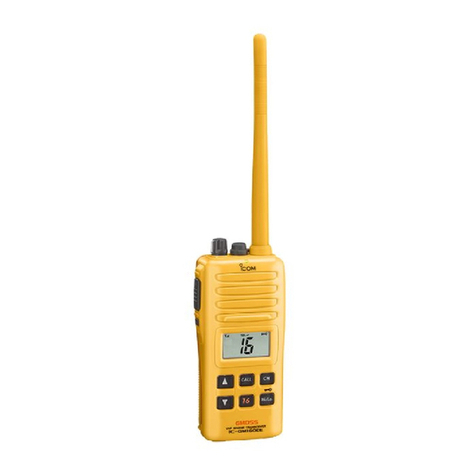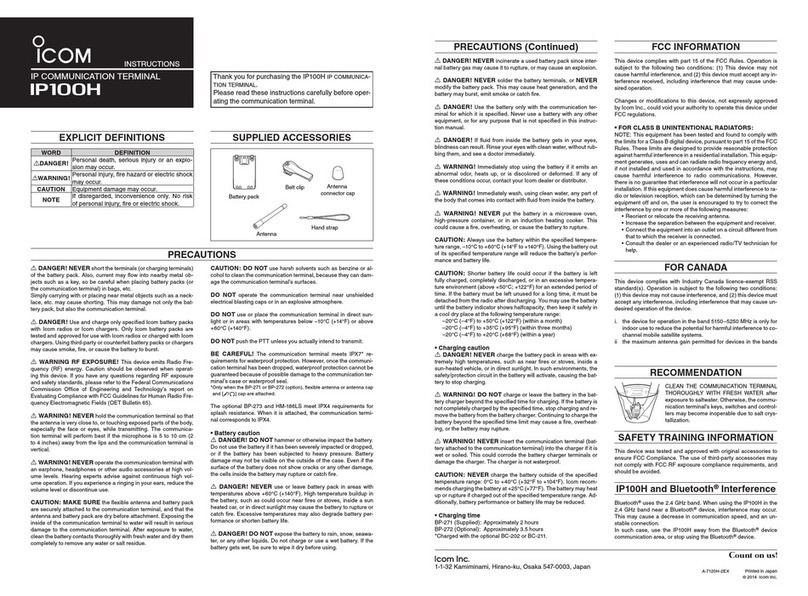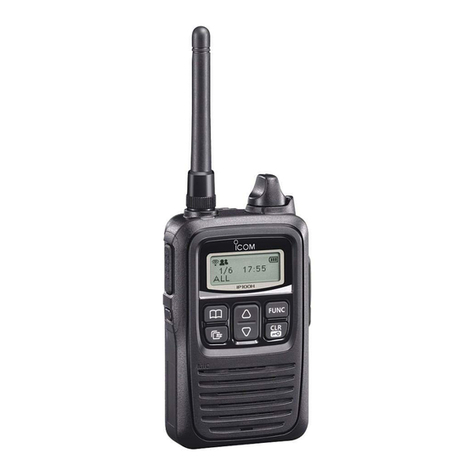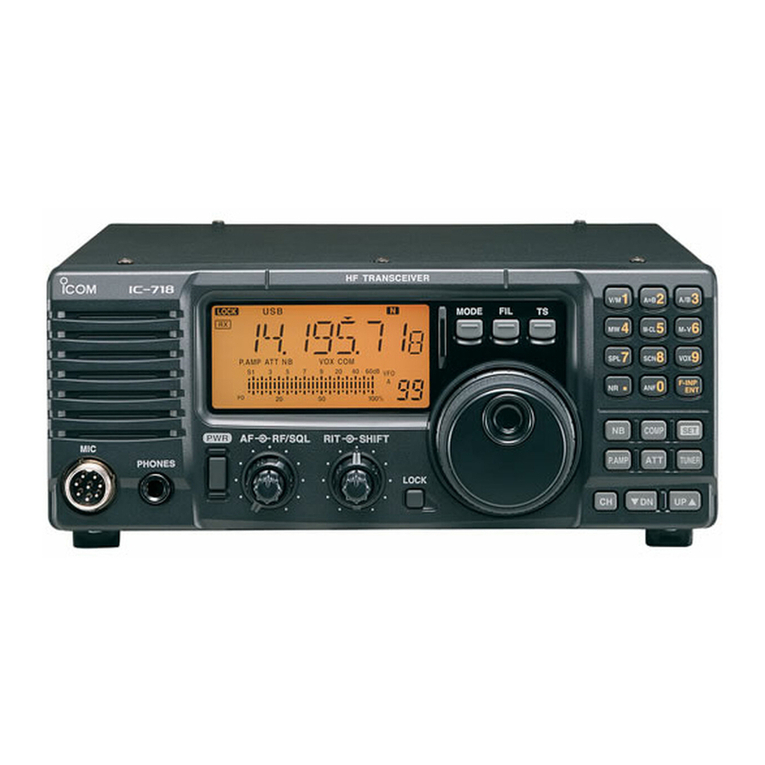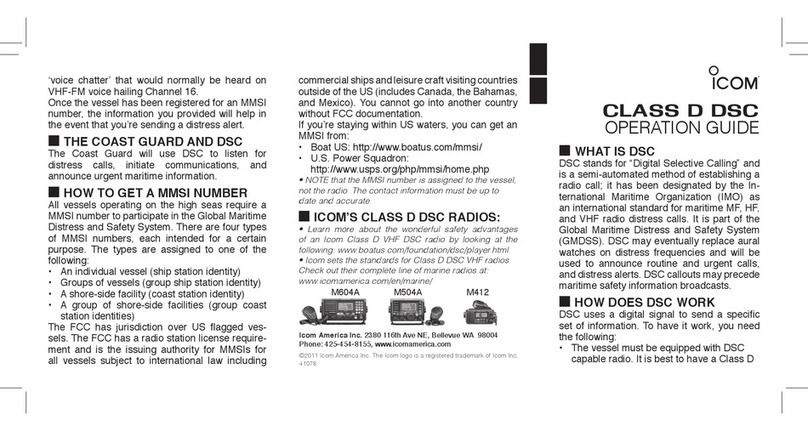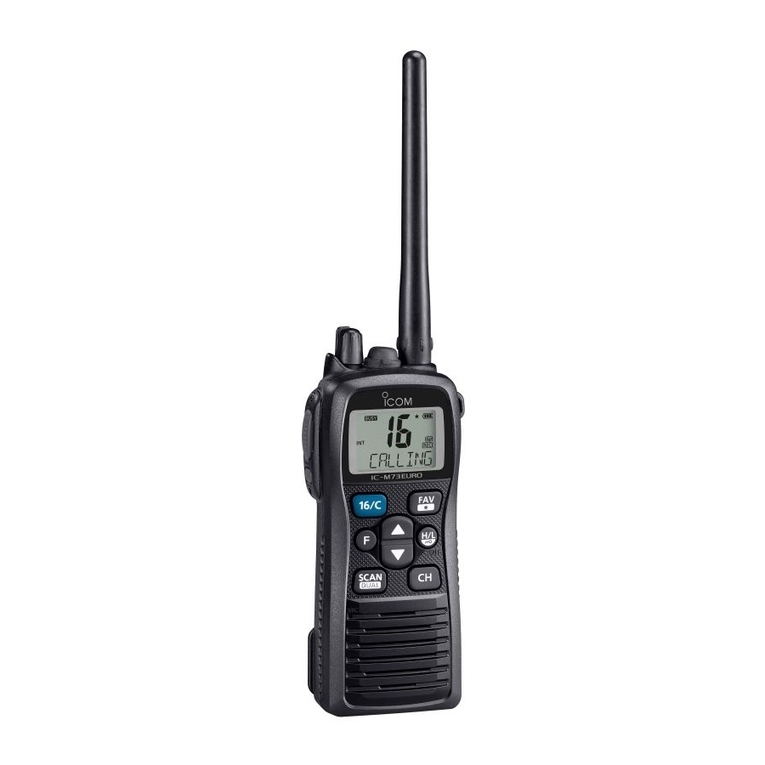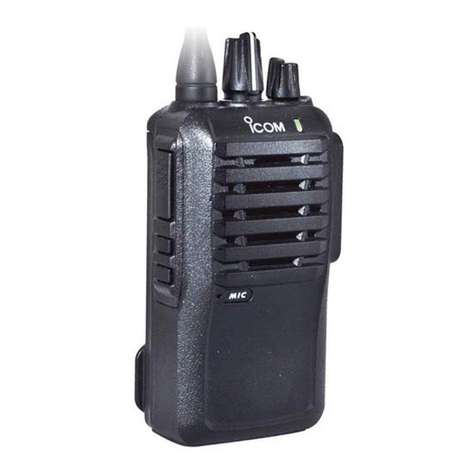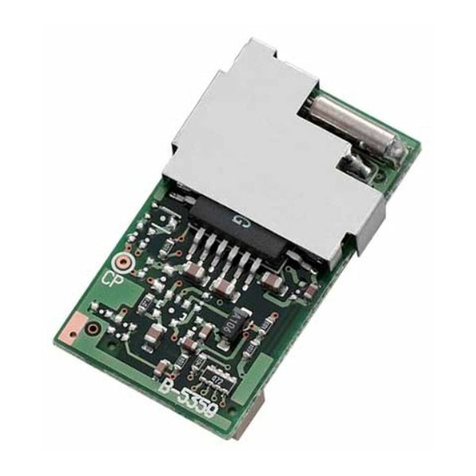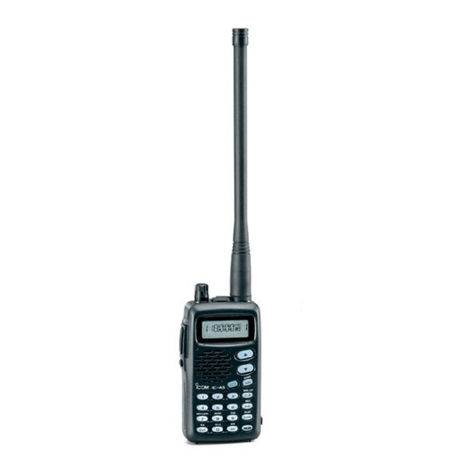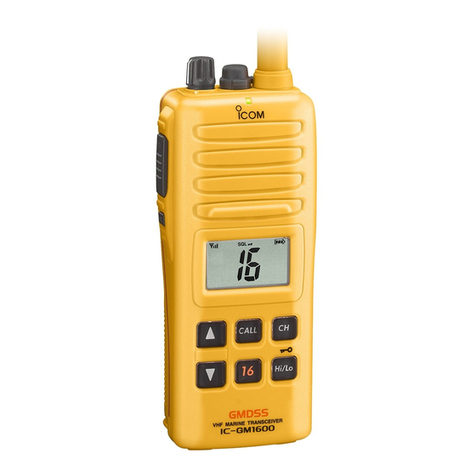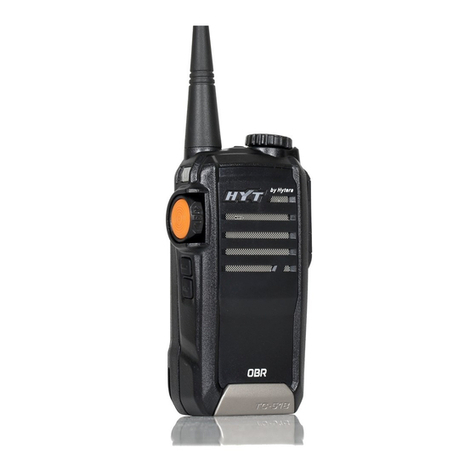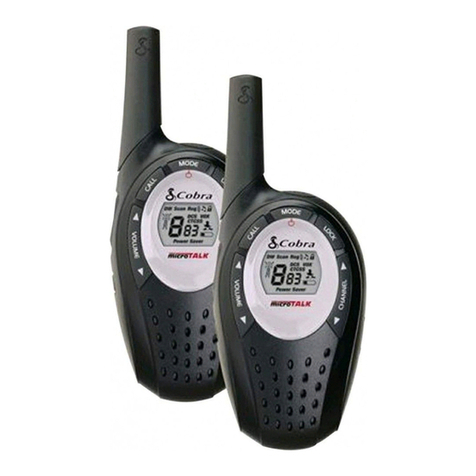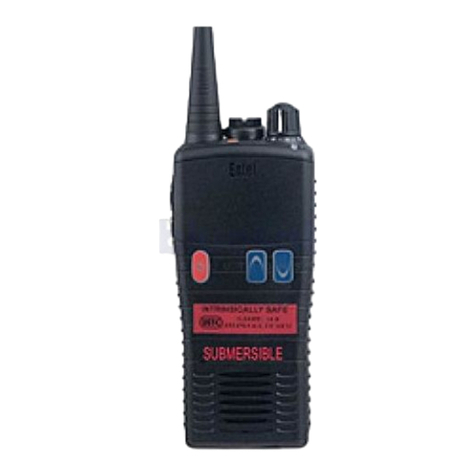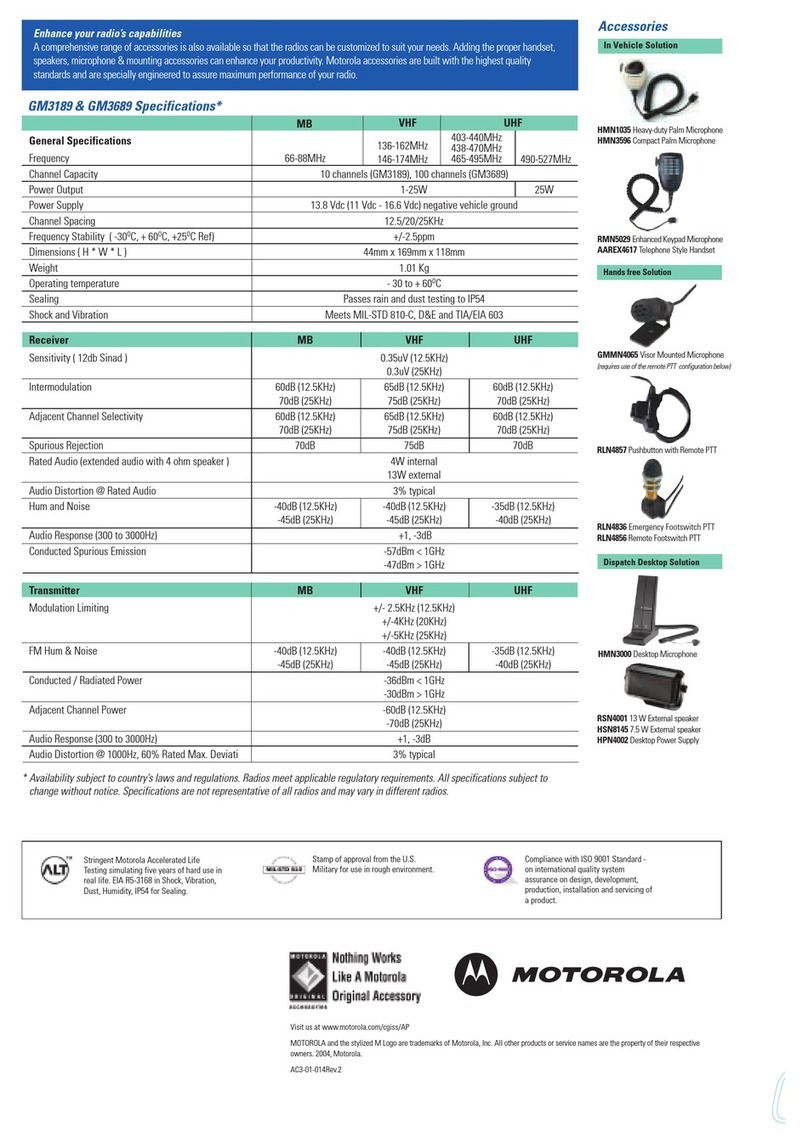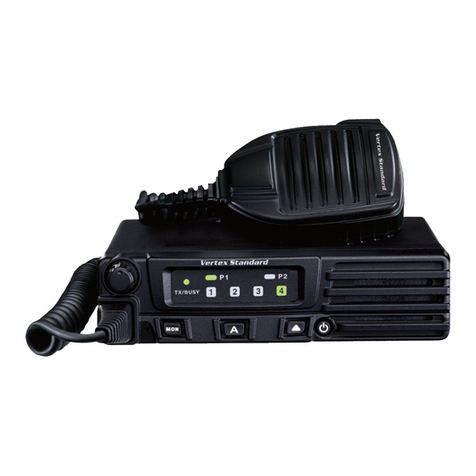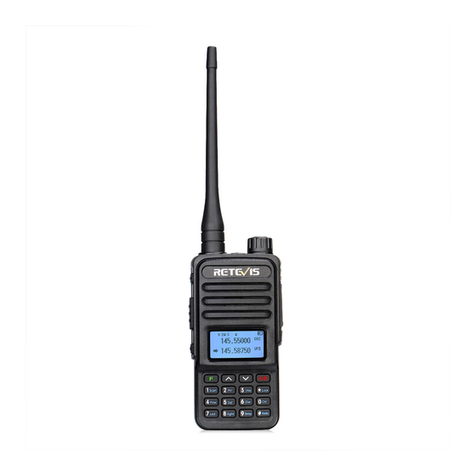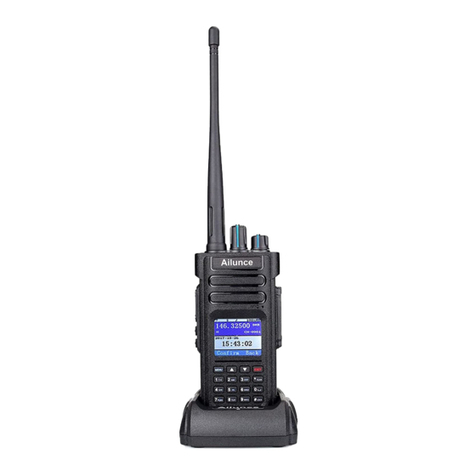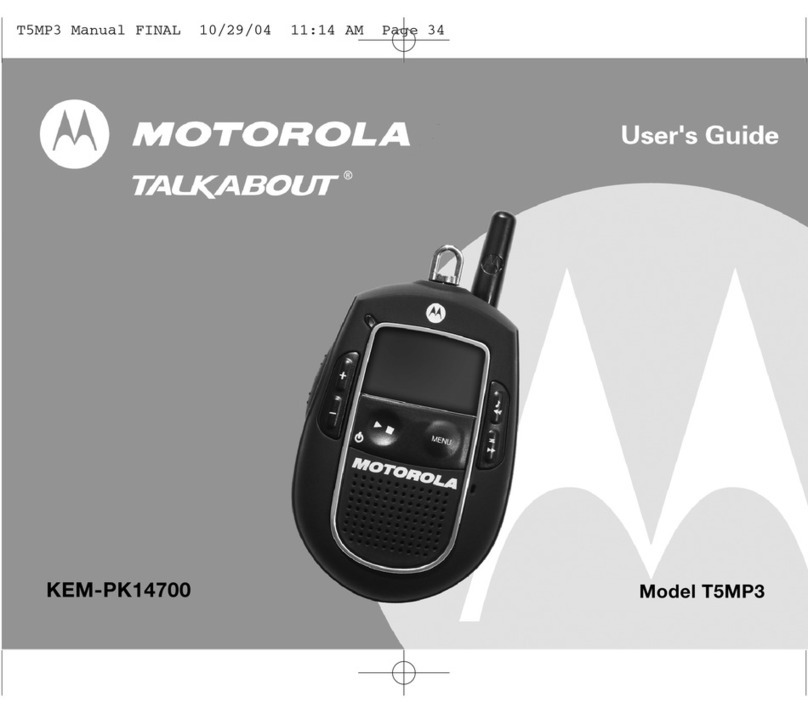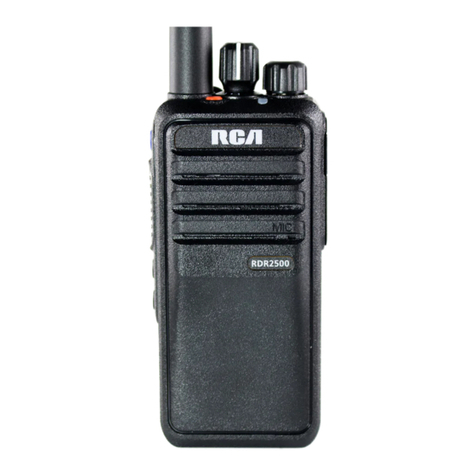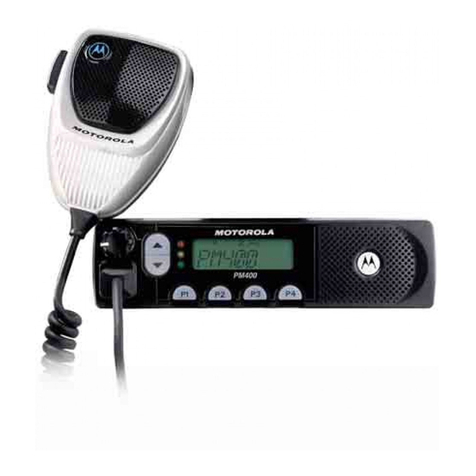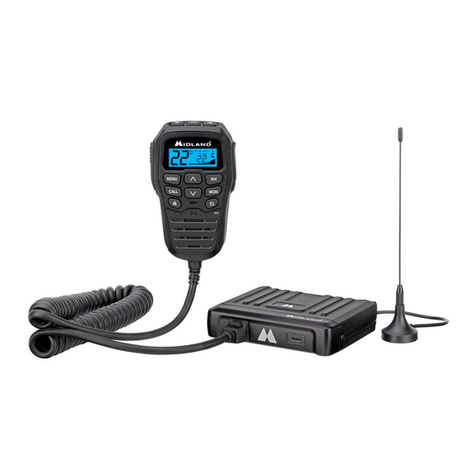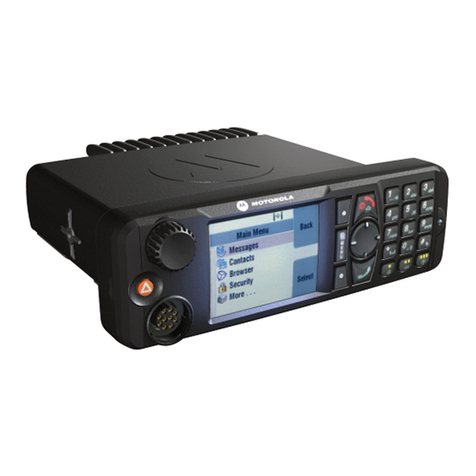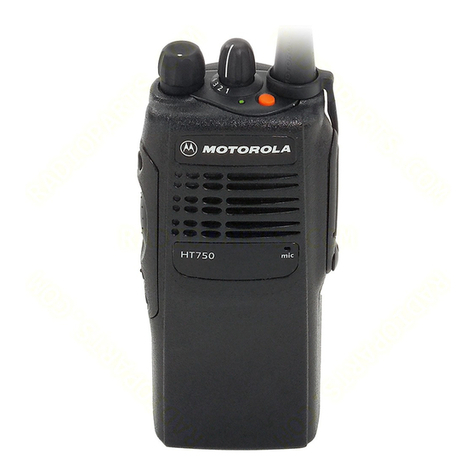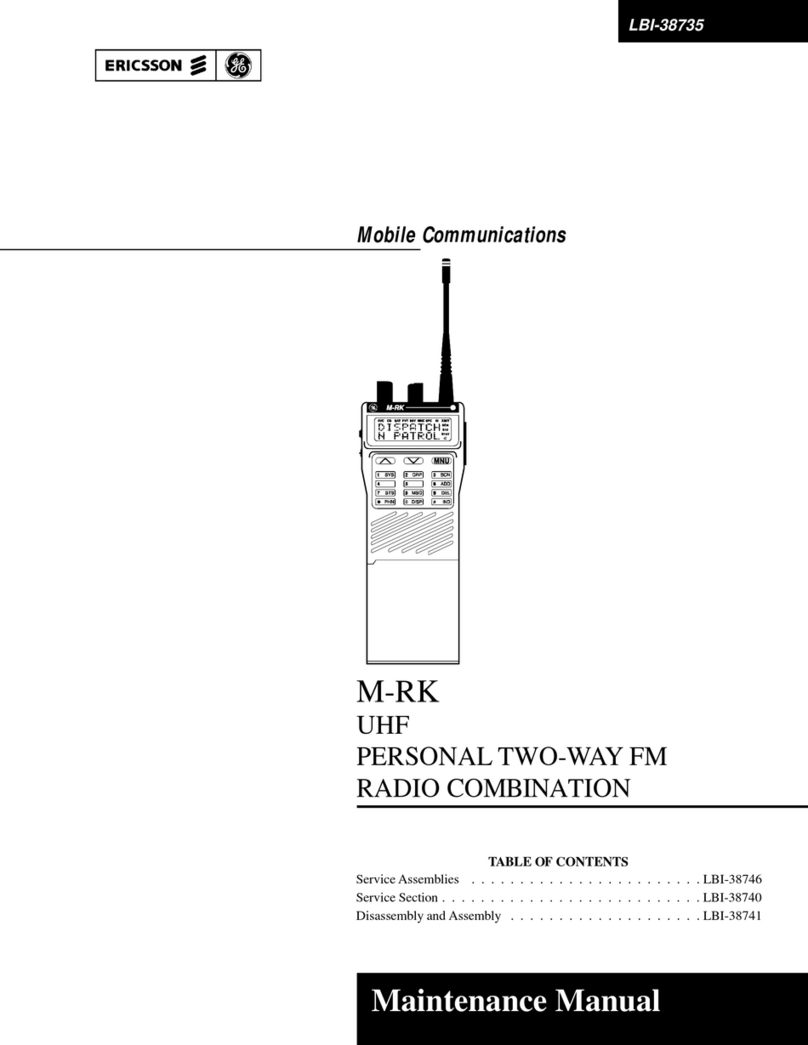Icom IC-4SA Parts list manual

o
tcOM Welcome
to M
ULTI-FUNCTIONmode!
lcom's
revolutioriary
ultra-smalllC-2SA/SEand lC-4SA/SE
handhelds
are
small,
ligh
t, andeasy
to operate,
yetcontain
sophisticated
high-tech
features
normally
onlyfound
in biggertransceivers.
M
ULTI-
If UNCTION
mode
altows
you those
"big-sized"
features
in
incrediblysmalltransceivers.
Use
specialinitializedsettings
availablewithMULTI-FUNCTION
mode
to fit your
specific
ope
rating
requ
i
rements.
Threc
kinds
of operation
can
be
used
with
the
handheld:
(1) SIMPLEmode
operation.
(2) M
U
LTI-FUNCTIONmode
operation.
(3) SettingM
ULTI-FUNCTION
mode
and operating
with
SIMPLEmode. ln this
way
youcan
use
aspeciallyset
han
dheld
with
simple
operation.
I MON|TOR
I
w7Ml
tq
TTUNC
The function of theE
switch differs depending
on the function guide
that appears. A total of
ten functions areavailable
with the E switch.
ElGHil
LK
Upgraded
functions
IC-4SA/SE
ICT?SA^/ SE
iffift'.ill..ell.Hifi..$.ffi..tH.Hi.i!ffi*'.14fidifffi,i'...
fU:i::rulnt€'f':::.;M:.:Ul:Hffi
liltllm':,U..N.ru#'liffi
..N
r D SWITCH
FUNCTION
w------
lfllllqcnoru
iilcU
IDE
{: i D,uP
t
t, irsorJ
lscrr]
lsxrP
r
[pcp
r:
sl
I
coor
FUNCTION
Calling
up thecall
channel.
AccessSET
mode.
Operates
witlrduplex
(with repeater).
Turns on in sequence
an
optional
subaudibletone
enc<lcler
or tonesquelch.
St
arlsscan.
l)r'ogr.rnrs
the memory skip channel.
5l,rrts
priority
watch.
M.rsks
the
memorychannel.
I
urns
on in sequence
anoptional
pager
functionor
codc
squelch.
I'rograms
lD and Tx/Rx codes
for pager
function
or
code
squelch. i
the
function
guide.
functionsbelowin
!uF,n,
p-owei
ON
,.,m.bdb;'"' IcAttI
Istr
I
I
pnro
;
IMASX
j
an,:d,,,,,W;,tuin:power
ON
6'['616,i,,':
.'..,,,,:
;
i ',i'
Tor
opc
r
,rtc Iu
nction
gu
ides
inse
quence
:
Pu$h
(r to operate
the
functions
above
in
Pu$hrtrNEJ
then
push
E to operate
the
thf;
f
urrctionguide.
T
n
*l
UNCTION
GUIDE
SELECTION
Opush
andhol6
ITU[el.
\'/ \-/ \
@Push
mft-Cl. @Push
E.
sFl_5
,Cr.al fml tEn rffi-l mTl
i$rr irror,r L.tlllu l!^]llJ tcilr
lcom
Inc.

The
handheld
has
seven
tuningsteps
tofit your
needs.SteDs
canbe
selected
usingSELECT
mode
asshownatri$ht. i',
Thetuning
controlchanges
the
frequency
in 100
kHz,1 MHz
or 10 MHz* stepsusing
the dial select
step
for setting
a
frequency
quickly.In
addition,the
memory
channet
number
canalsobe changed
in VFO modefor writing memories
quickly.
* 10 MHz steps
can beselected
only in the IC-2SA
U.S.A.,
Asia
and
lC-zS
E I
taly ve
rsions.
The
dial
select
function
canoperate
after
pushing
IFUNCl.
Theselected
step
cannot
be
usedin SIMPLE
modewhich
has
adefault
valueof 100
kHz.
,15.n
E E
@
WhilepushinglLffil
and E, turn power
0n.
While
pushing
tticrn
andl-v78, turn
power on.
To see
this mode in,d,etai,l,
advaficetO in'sidb.,
'i :' '

OSELECTING
A MEMORYCHANNEL
OPush lTlMl. @Rotatethe tuning control.
nnode
)
PRIVATE
and i
hold
p'@
I SCAN
TYPES
PROGRAMMED MEMORY
I SCANOPERATION
1)
Select
m:
- Push
andhold
tmld for 2sec.
- Push
n-l
until ffifl appears.
- push
[FUNcl.
2) Push
I
vzttltl
to select the operating
mode,VFO
orMEI\4ORY.
- Programmed
scan
: VFOmode.
- Memory
scan : MEMORYmode.
3) Set
ISQL] to thethreshold
point.
4) Push
E to start
scan.
5) Push
E again
to stopscan.
<,--.>
fnv fo oP
OMANUAL
SCAN RESUME
AND SCAN DIRECTION
While scan
pauses,
the tuning control resumesthe scan
regardless
of the
scan
resume
condition,resume/timer.
While
the scan
is operating,
the tuning
controlchanges
the scan
direction.
t:
L .,:
a
.:.
1i'''
'i'::
,';
.#i
3)Push
[FUrrrE
then push
E
memory
channel.
4)To
erase
"SKIP,''
repeatstep
to write "s KlP" into
3 again.
fifl
I
m€m€m
\ @ pusfrV7Mj. I
/
For blank
channetselection,
pushEE beforestep
@
OTRANSFERRING
MEMORY
CONTENTS
Csefect the memory channet
. @ Pushttruxclthen push
m€m
*it'iS;, conYEttEtT-
A memory
channel
number
canbeselected
in VFO mode
using
thedialselect
function. This
function
performsquick
memory
writings.
OMEMORY
TRANSFER
Memorychannels
0 ,',
9 canindependently
program
offset:
frequencies
and
optionalsubaudible
tone
frequencies.
I his,
means
you caneasilyselectthese
frequencies
in the VFO
using
the memorytransfer
function,
evenwhenthe trans-
ceiveris
returnedto SIMPLE
mode.
OMEMORY
CHANNEL
MASKING
ffi*;';ffiffi lll
When
the
guide
appears.
Unwanted
memory
channelscan be masked
(triOOen).
A
masked
memory
channel
cannot
be
selected
for normal
use.
However,
thecontents
can
berevived.The
masked
rilemo[]
canberevivedonly
in
MULTI-FUNCTION
mode. r
I
1
lr
The handheld
includesboth
programmed
scan
and
memory
scan. The following initialized
setting
can be performed
whenin
MULTI-FUNCTION
mode:
- Programmed
scanedges
{using
SET
mode)
- Frequency
skip
function
on/off(using
PRIVATE
- Memory
skipfunction
(when
ffi appears.)
- Scan resume
condition, pause/timer(using
mode)
Appears
whenin
MEMORY mode.
I TREQUENCYSKIP& MEMORY
SK|P
The frequency
skip function can be activated
during
pro-
grammed
scan. The function skips
unwanted
signals
that
inconveniently
stopscanningsuch
as
no
modulation
signals.
The memory skip function skips unnecessary
memory
channels
duringmemory
scan,
making
shorter
intervals
for
memory
scanning.
SKIP
r SKIPCHANNEL
PROGRAMMING
OFREQUENCY
SKIP
While
scan
pauses,push
ITUN-el
thenpush
and
hold
IVTltltl
1s
program
the
frequency
as
theskip
channel.
To cancel
theprogram,
seethememory
skip
functionbelow
sincethe skip frequencies
hasbeenautornatically
program-
med
into memory
channels47
,^-,
10
the
same
as
the
memory
skip
channel.
EMEMORY
SKIP
1)Selectthe
memory
channel
to be
programmed.
2) Select
ffi: - Push
and
hold
tFtiMCl
for2 sec.
- Push
[-d
until ffi appears.
- Push
ITuNCl.
tY5.6
il ."r.
the

When
the ffi guide
appears
on the function
one-touch-access
callchannel
can
beused
as
your
used
frequency.
display,
most-of e
n-
1)
2)
3)
Select
ffi: - Push
and
hold
t-FUN-el
for2sec.
- Push
[Cuntil
m appears.
_
push
ITUNC
l.
Push
E to
call
up
thecallchannel.
Push
[d againtoreturn
tothe
previous
mode.
L
1
) Select
[X-lRl
'
- push
and
hold
f
FUNC
for
2sec.
- Push
lC until ffi appears.
- push
[FuN-c-].
2) Selectthe memory channel
to be
watched.
G
Irv5\E
Tl
lml
E
| ,*
5.il.Eii
,;,E
I
It'**'
:
I r.rl.E.ilii
,;,8
|
lrml
m
I PR|O I
lmstI
|-'
E
rqto startthe
priority watch.
again
to stopthewatch.
1)
Select
{Sfl
,
_
push
and
holdtTUNelfor2sec.
- Push
E until ffi appears.
-Push
IFUNC
l.
2)Push
I
v/fntoselect
MEMORYmode.
3) Push
ld tostart
memory
scan.
4) Select
ffiI9J
'
_
push
and
hold
tTUNc-l
f
or2sec.
- Push
E until
ffig appears.
_
push
ITuNel.
5)Push
E to start
the
priority
watch
during
memory
scan.
6) Push
El again
tostopthe
watch.
iD.>--
fnY To o
ORESUME
THE PAUSE
To resume
the watch
operation
wh
ilepausing
thewatching
frequency:
- Push
E whilereceiving
the
watchingfrequency.
- Wait15 sec.or until the signal
disappears.
The
watch
automatically
resumes
15sec.after
the
signalisreceived,
or 2 sec.
after
the
signaldisappears.
r-rr-r
I t+5.8
tJ r:
l--------------.1
u\.E
E I I
le li#ilffi,n#
1) Setthe
frequency
in
VFOmode.
2) Select
ffi then
push
E tocall
up
thecallchannel.
3) Push
mq then
push
and
hold
I
v7T\4
l.
o
TheVFOfrequency
is
programmed
intothecall
chan,#rel.
::,:ff::,T'#J.ffi
mode. When
you often
use
the
callchannel,werecommend
that you use
SIMPLEmode
since
its
call
channel
isreplly
"one-touch-access.t'
*
,,iJ
1)
Select
m: _
- Push
and
holdl
FUNC
I
f
or
2sec.
- Push
E untilffi appears.
-pushltUrcl.
2) Push
E ts cafl
upthe
callchannel.
3)
Select
ffi
- push
and
hold
I
FUNC
I
f
or2 sec.
- Push
E until ffi appears.
- PushIFUNcl.
4) PushEl to starttheprioritywatch.
5) PushE again
to stop
thewatch.
3)Push
4)Push
:
I rv\'l
tJ .,
1
tEi I
@
lwl
@
lmt
E
I rv5.7X
El
|Pmo I
lml

ncy (offset frequency
)
for repeater
Offset frequency can bechanged
control.
the programmed
frequency range.
n the tuning control, can be used
witch is pushed. For silentopera-
optional UT-50 or UT-51 unit is
y is required for repeater
or tone
display
with the
tuningcontrol.
DA il.
r'
1:: r;::i :' L
the
change initial
settingsof your handheld fit your
VFO MODt
PROGRAMMED
SCAN EDGES
tu
rned
on
ly whe
tone freq
a tone on
PushlEtfTl
then
E.
Whenthe guide
apBears.
Pusli [F-r-T].
SET
MODE
uflir.
EIIE:
-'-'I"..I.I
E, l- fWil
il l- lYr'il^"'l
ffi - -',o,1.'l
.--w
ls
:#
T[ft displaybacklight
isselectable,automaticallyturningoff with the
5 #.. timer,
or continuouslylighting
up with manualoff.
o,$i :5sec.timer
. ff : Continuouslylights
up
Tffinsmitinhibiting
canbeusedto prevent
accidental
transmissions.
e,# : Transmit
is
acceptedo
r,#t- : Transmit
is
inhibited.
Tfiie
frequency skip function can be turned off during programmed
scnn
even
when
you program
theskipfrequencies.
r,i,qn : Frequency
skip activates.
a$FF : Frequency
skip
deactivates.
,::]
.
Two pause
conditions are availablefor scanning
to fit your require-
m,Cnts. While receivinga signal,scan pauses
for approx. 10 sec.
or
unrtil
thesignal
disappears.
r.,,+10
: 10sec.
timer.
a::,P'-02:
Pause
until signal
disappears.
T_$}}e
power saver function alternately switches "circuit off" and
"$andby" to conserve the battery power. The ratio of the duty
cffile can be selectedin 1:4, 1:16 and off ("off" only functions
in
tffi shndby condition,not in thecircuit
off condition).
$t
Using
the
,tu.ning
e6,ntrol.
PR
[__;;"prl
t_'J
CONDITION
cTto
,an
@l{;
m
IH
tr]
F
SCAN
RESUME
m
nFF
BEEPTONEON/OFF
SUBAUDIBLE
TONE
FREQU
ENCY
PTT LOC
K
F
FREQUENCY
SKrP
FUNCTTON
oN/oFF
F-
XP
POWER
SAVERDUTYC
PRIVATE
Option

SET
mode
To
,'|,):
i,p)
changeSET
mode
and
PRIVATE
mode:
Access
SET
orPRIVATEmode.
Push
[VlM
I or E until "PM" appears
onthe
rightof the
d
is
play.
Rotate
the
tuning
control
to select
"on" or "oFF.
"
I
r
*
R
I
i
RECEIVEINDICATOR
(BUSY
LtcHT)
isselected.
PRIVATE mode
is
selected.
?;j,,
i?,?Hl'fifJ,'.
Eachmemory channel
programs
the duplexcondition
Once
you program
the repeater
frequency
andduplexintoa
memory
channel,
the ffi guide
isnot necessary
to select
a
repeateroperation.
Memory
channels
0^.,
9 can
independently
program
anoffset
frequency
and
anoptional
subaudible
tone
frequency.And
these
frequenciesof memorychannels
10- 47 arethesame
asthe VFO contents. Wetherefore,
recommend
program-
ming
the specialrepeaterinto memory
channels0 - 9, and
standard
repeater
(offsetand
tonefrequencies
arethesame
as
others)
into10
* 47.
FF Tho\receive
indlcator
can
beturned
off to conserve
battery
power.
o
ontr: Indicator
lights
up.
. oFt' : Indicator
doesnotlight
up.
,,$..
E
UT-50
TONE
SQUELCH
UNIT
isnecessary
for
3)
1) Settheoffsetfrequency.
2) Set
thesubaudible
tone
it. (An optional
UT-50
SET
mode.)
(See
SET
frequency
or UT-51
mode)
if therepeater
requires
unitis
necessary.See
Th6,:tone
wiffi thesquelch
function
allows
you to receive
onlysignals
same
subaudibletone as programmed
in your
tq[.E
E n-DUP
t15.8
E, il
mor
tl3eri
1) Select
ffi' - Push
|ruNF for2sec.
- Push
E until m appears.
- Push
I
FUNc
l.
2) Push
E to select
duplex.
3) Set
thereceivefrequency
(repeater
output
frequency).
4) Turn on the subaudible
tone encoderor transmita
1750Hztone
call,when
the
repeater
requiresit. See
right
for details.
5) Push
andhold
IFT-rf
to transmit
and
speak
intothe
micro-
phone.
6) Release
lFfr-l
to return
to receive.
7) When
the contactingstationis located
closeto yog, thg
repeatershould
not beused.Push
reNJTOE
to chesk
the.
direct
signal
from thecontacting
station.
#;
rti
t*:',:
tt
T.
i;
*.
it,:l
traffi$cetver.
.'
1)Setthe tone
frequencyto use.
See
SET
MODEabovefor
details.
2)
ft'ec'
ffi:lillffilllffil::3,
*'
3)
PushfF*um
then
push
E until
"T SQL"appears
asabove.
,,:i|
,,
il .:
l'.
--.---fffffffffffffff--...............----
trrs so coflvEltfE|U7-
OPROGRAM
INTO MEMORY CHANNELS
Each
memorych
annel
programs
"tone squelch
on/off"
Once
you program
the"tone squelch
oh," the ffi guide
is
notnecessary
to select
atone
squelch
operation.
Memory
channels
0 ,\, 9 can
independently
program
a tone
frequency. We thereforerecommend
programming
the
"tone squelchon" into memory channels0 - 9. Use
memory
channels
10
- 47
forduplex
operation.
'$lt"'
if,ti,
il
An$ibptional
opffiation.
ig;ii,l
.$UBAUDIBLE
TONE
ENCODER
Anoptional
UT-50
orUT-51
is
necessary.
1)Select
['"T6r]'
- Push[rUrrrclfor
2sec.
- Push
E until
ffi appears.
push
ITUNCI.
2\ Push
fFu[dl
then
push
E toturnontone.
1750H2 TONE CALL (|C-2SE
only)
Quickly push Fnl twice and briefly
{forsecond
push). hold FTfl down

l
Thetransceiver
has
abuilt-in,
advanced
2*lhoursystem
cl
with timer funstions,
a power
on timerand
autopower
tirner. The power on timer turns on the transceiver
at
pre*et time. The auto poweroff timer turnsoff the tra
ceiver
when
youforget
to turn off power.
Push
lEr\idl then push
lmm-B-l to enterCLOCK
Then
push
|V/M-l
tos-elect
the
desired
display.
*
The transceiver
can be used
as a clock when you do not
operate the transceiver. This
clock time is used for the
power on timer,
TIME ERROR: l min./week
'C push
I-tuTA
then
nvloNim--l
.
' ( @Push
E. @
Rotate
the
tuning
control.OPush
fFmL
.H ;E-T
ii:iir,l:':ii.i
iiiii:ii7::::
f@Push tTlT-l
to select
thisdisplay.
.,liil.r
,1.):.ti::;.::::.t.
r::::
:it:lr
:.1
Using the power on timer,
the transceiver is in the
"circuit off" condition until
preset time is set. The trans-
ceiver can be automatically
tu
rned on to fit y
ou
r QSY
schedule.
The power on timer activates
also
in SIMPLE mode when
the transceiver enters fie
"circuit off" condition via
the auto power off function.
C p
ustr
m,ffil rhenf@ryiT6Fi. @wnirc
pushing
froNcl,
push
E. @Rotate
the
tuning
control.
@
l@l
@ Rotate ePush
IF@I.
A dot appears
when the transceiver
is
in the "circuit off" condition.
lf you forget to turn off the
transceiver,
don't worry, the
transceive
r will automatically
turn itself off.
A, power off interval time
can be selected in 24, 40 or
60 min. And th
is function
can be turned off for con-
tinuousstandby.
O Push lffil thenflilNtroR-|.
@Push
l-vtr]
to select
this
display.
60
min 40
min
20 m
in off
@Rotate the tuningcontrol.
@Pusn
tm toexit
CLOCK
mo'de.

''l
* 1,ffi
,,,::l
An optional
UT-49DTMFDECODERUNIT
is
necessarffir
pager
and
codesguelch
functions. !i, o
MAKING A SELECTIVE
CALL
These
functions
can
be
operated
onlyin
MULTI-FUNCTIffiN
mode. l$'
':t#
PAGER
FUNCTION: .,'ffi
The
pager
function
informs
your
lD code,decided
in
#ut
group,
to thecontacting
station's
display
with beep
to,ffies.
This
function
is
very
convenient
when
you
areawayfromffihe
transceiver.
Use
the
pager
function
forcalling
and
the
ffide
squelchforcommun
ication.
CODE
SQUELCH:
Thecode
squelchfunction
allows
you silentstandby
you will receiveonly a call
fromthe
stationthatknows
lD code.
serTN6.I.*ADVANCE
1) lnstall
UT-49
into
each
transceiverinyourgroup.
2) Decide
thelD code
of each
transceiverand
the
group
in
your
group.
3) Decide
whetherto return to normal
operation
or
squelchoperationafter
contact.
o
Channels
Cl H C5 can be programmed
with another
station's
lD
codeor group
code. Decide
in your group
which
channel
is
used
for
thegroup
code.
o Channel CP is used for the memorizing spacethat automatically
memorizes
an lD code
when
receivinga
call.
o"PGR" :Pagerfunction
"C SQL" :
Code
squelch
3) Select
the
codechannel
:
- Push
ITUMc-lrhen
push
U.
- Rotate
thetuning
control
to select
the
channel.
-Push
Iprrl.
. Select
the specified
station's
I
D codefor person
alized
comryunicationor the
group
code
for group
communica-
tion.
4\ Push
l-PrT-l
to transmit
the
selected
DTMFcode.
5) Pagerfunctiononly: Waitfor ananswer
backfrom the
standby
station,then
proceed
toSTANDBY
steps3- 5.
6) Code
squelch
only: Operate
the transceiverthe
sameas
in
the normal
way (push
ml for transmit
andrelease
to
receive).
However,
only the signalincluding
the
correct
codecan
bereceived.
7) Push
E once
or twiceto turn off the
function.
.WAITING FOR A SELECTIVE
CALL
1) Select
['fjTTl.
2\ Push
E to turn
onthe
pager
function.
3) When
receivinga call
from the
callingstation,
the
display
showsas
follows:
o
When
receivingthe
tDcode,
channel
CP
appears.
o
When receivingthe grou
p code, groupcode channel
appears.
1)Select[ffi]'
-
2\Push
E until
appears
on
the
function.
Push
and
hold
f
FUNel
for2 sec.
PushE until
ffiappears.
push
I
FUNC
l.
{'PG
R
" or "C SQL
"
display
to activatethe Codesquelch
'tll
tii,
'{i
$
t.l!.,!,
sffice
'lifi
Y1PU
r
rjii
:$
:,9,1;
,i,!,+ 1) Select
[FSjTEl'
- Push
and
holdFm-q f
or 2sec.
- Push
E until[TeT
appears.
- Push
I
FUNc
l.
2')Push
lRim then
push
E. a
3) Rotatethe tuning controlto select
thecode
channel
to be
programmed.
o
Code channel
CP cannotbe pro-
gram
med.
4) While
pushing
[ml, push
E.
o
1st
digitblinks.
5) Rotate
the tuning
control
to set
the
blinking
digit.
6) Push
E then repeat
steps
5
set
other
digits.
7) Push frur.tcl to store the
digits.
and6 to
sel
ected
"receive
anothe
r
p
rev
ious
,!,,4
ffi
{t
i
c$oe
,.,#
t#,
q#ot
i.#r,,
i$r
8)
e)
10)
Push
trV-lTn
to set
the
channel
inhibit"or "receive
accept."
Repeat steps 3 '\, 8 for
channel
programming.
Push
ml to returnto the
mode.
4)
s)
Push
tFrr-l to transmit
the answer
back
andto returnthe
displayto the
previous
one.
Push
g assoon
as
transmit
isfinished
to turn off the
pager
function
andselectthe
code
squelch.
o
lf receiving
the next call before
push
ing E, proceed
again
from step
3.
PAGER,,€,O-,D'E
PROGRAMMING
CHANNEL RECEIVE {I...
I
NH
I
BIT/AccEPT $t
You
r lD code c0 " Accept" only.
Another station's
I
D codes C1 C5 "lnhibit" should
be pro- [i
grammed
in each
channel. [',i{
Groupcode Oneof Cl - C5 " Accept" must be pro- F
gram
med. [', I'i5.8
E E
ffir-6n
t cooe I
Both pager
and
code
squelch
edging
thespecified
station. useDTMFcodes
for ackn
Other manuals for IC-4SA
2
This manual suits for next models
3
Table of contents
Other Icom Two-way Radio manuals
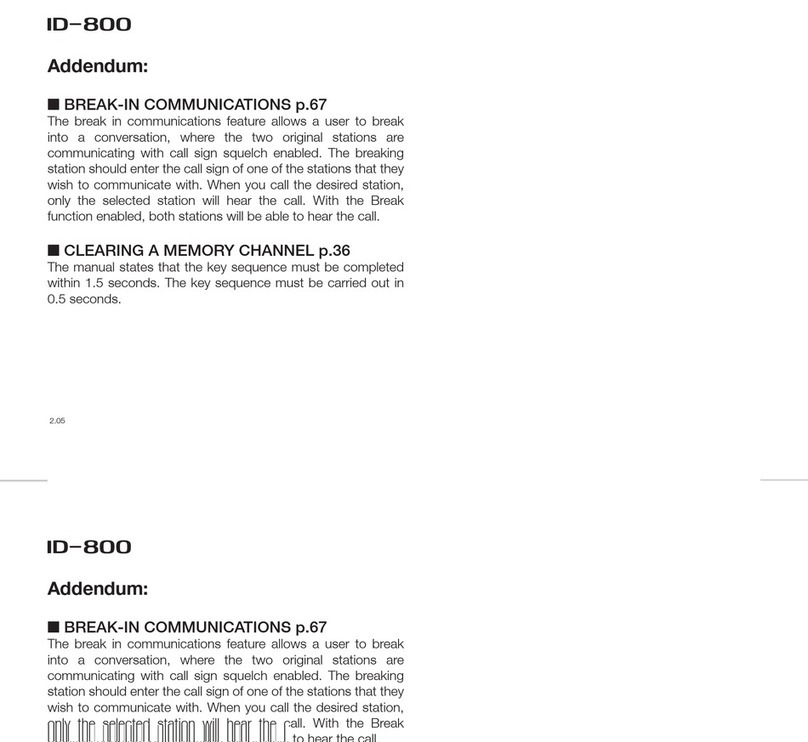
Icom
Icom ID-800H Installation and operating instructions
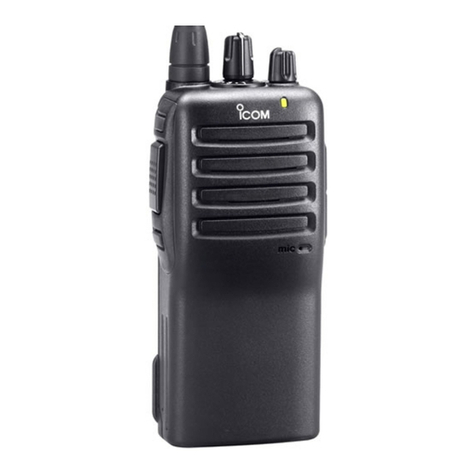
Icom
Icom CS-F14 User manual
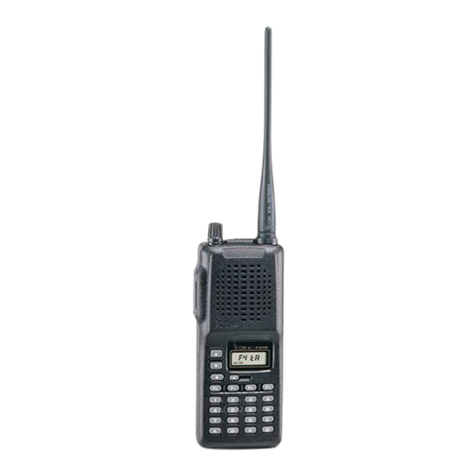
Icom
Icom IC-F4TR User manual
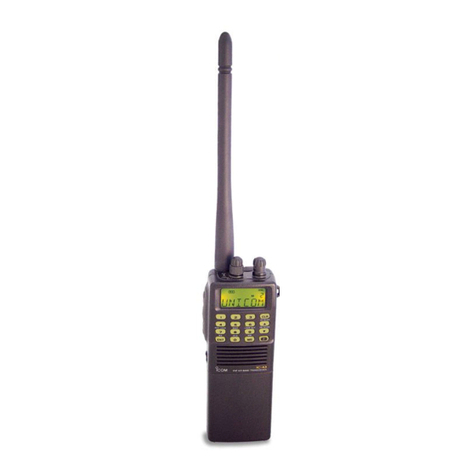
Icom
Icom IC-A3 User manual
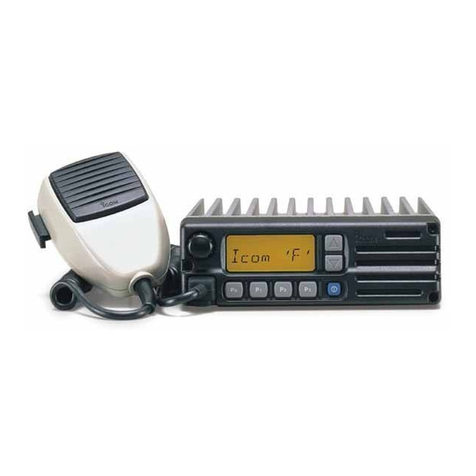
Icom
Icom IC-F1500 User manual
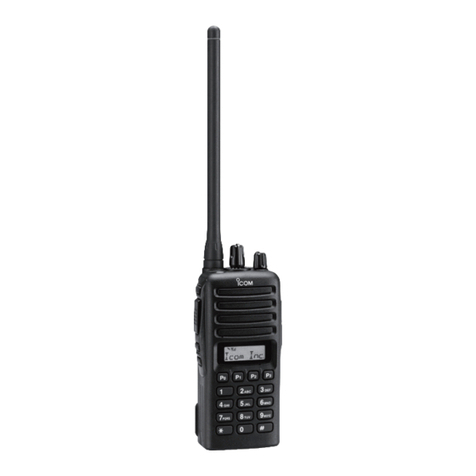
Icom
Icom IC-910H Operating instructions
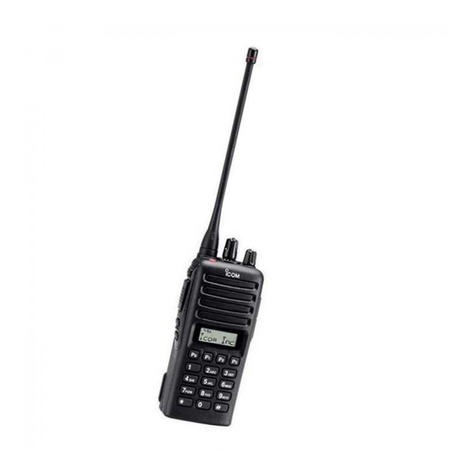
Icom
Icom IC-F43GT Operating instructions

Icom
Icom IC-GM1600E User manual
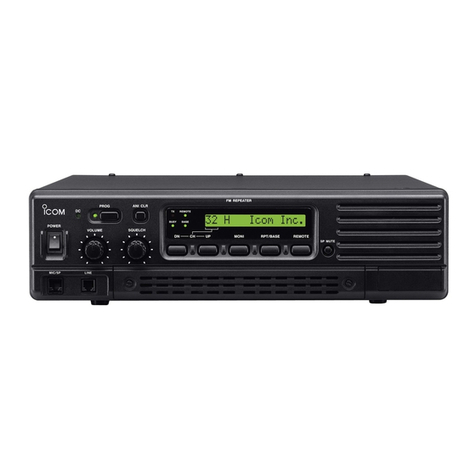
Icom
Icom IC-FR3000 Series User manual
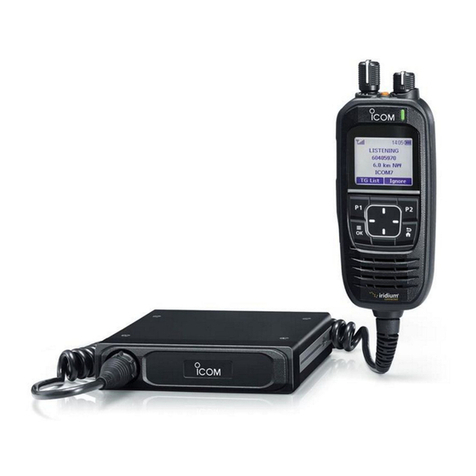
Icom
Icom IC-SAT100M Manual
